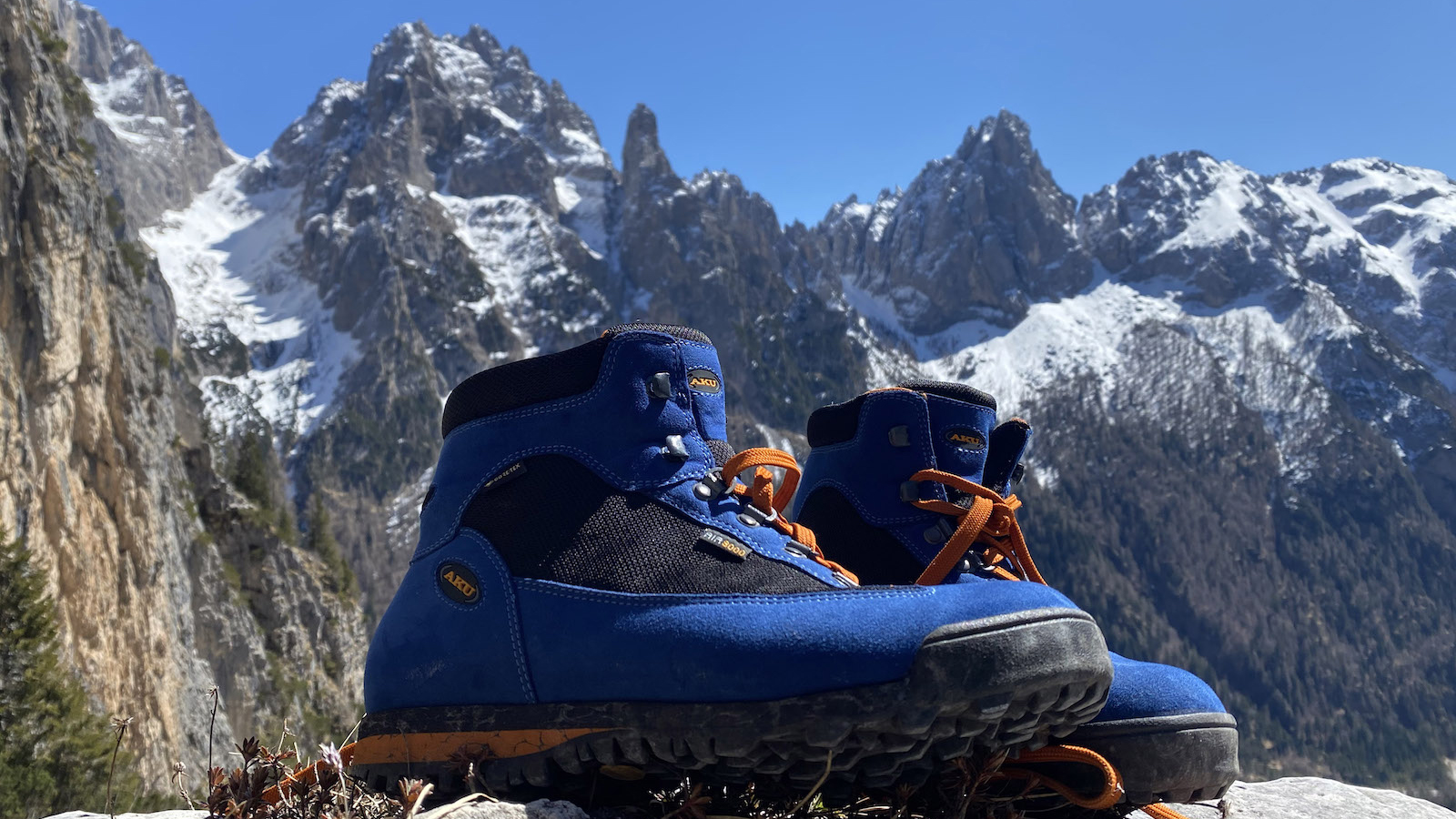
The hiking boot market is crowded with brands all vying for the attention of those who love the trails. This leads to a situation where manufacturers strive for that USP that'll turn a browsing consumer into a loyal customer. However, all these innovative technologies, features and components mean we're faced with a shed load of unique terminology every time we shop for hiking footwear.
Knowing the parts of a hiking boot and what each part does can help to decode what's going on beneath the surface, enabling you to make better decisions when it comes to a purchase.
Our hiking and mountaineering experts are here to explain all, revealing the constituent parts of a hiking boot and their purposes. This should make you better equipped to find the best hiking boots for your upcoming adventures.
Parts of a hiking boot
As with most forms of footwear, a hiking boot can broadly be split into four main parts, each of which has its own features and components. To really understand how it all fits together, it's worth looking into how hiking boots are made, which we were lucky enough to do when we visited Aku's, an Italian hiking boot manufacturer's factory.
For more on the constituent parts of each part of a boot, click the links or scroll down this feature.
- The upper: The upper is the part of the boot that covers your foot, providing protection and support. It's usually cut higher than on other forms of outdoor footwear like trail running shoes or hiking shoes, providing more ankle support. It's typically made from leather or synthetic fabrics.
- The insole: The insole is the part of the boot that your foot rests on. It's invariably padded and is usually removable, meaning you can replace it with one that's more suited to your individual requirements.
- The midsole: The unseen part of the boot that lies between the insole and the outsole and provides both cushioning and support. In hiking boots it tends to be made from either cushioned EVA (ethylene-vinyl acetate) or polyurethane, which is more durable.
- The outsole: This is the highly durable part of the boot that comes into contact with the ground and is usually made from rubber. It features grippy lugs to provide traction on different surfaces. In some boots, the outsole curves upwards at the toes, providing additional protection.
Meet the experts
Today's best deals
Parts of the upper boot
The upper refers to all of the material in the boot above the sole and there are many components present in the upper, from the tongue and lacing system to the waterproof membrane and ankle cushioning at the collar.
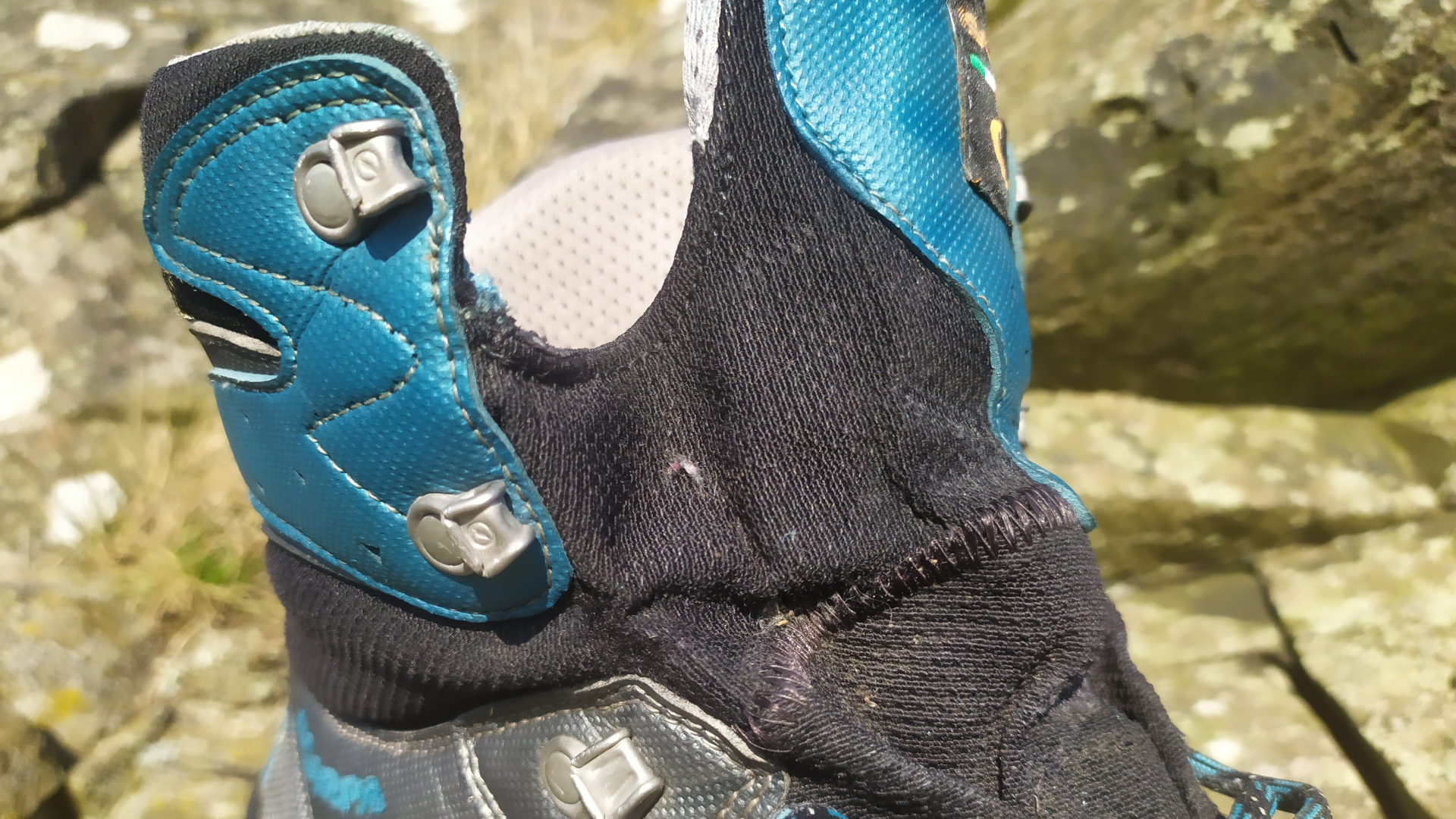
Bellows tongue: a wide folding tongue that is stitched to the sides of the uppers to prevent water and debris entering in the forefoot area.
Collar: the padded cuff around the top of the boot.
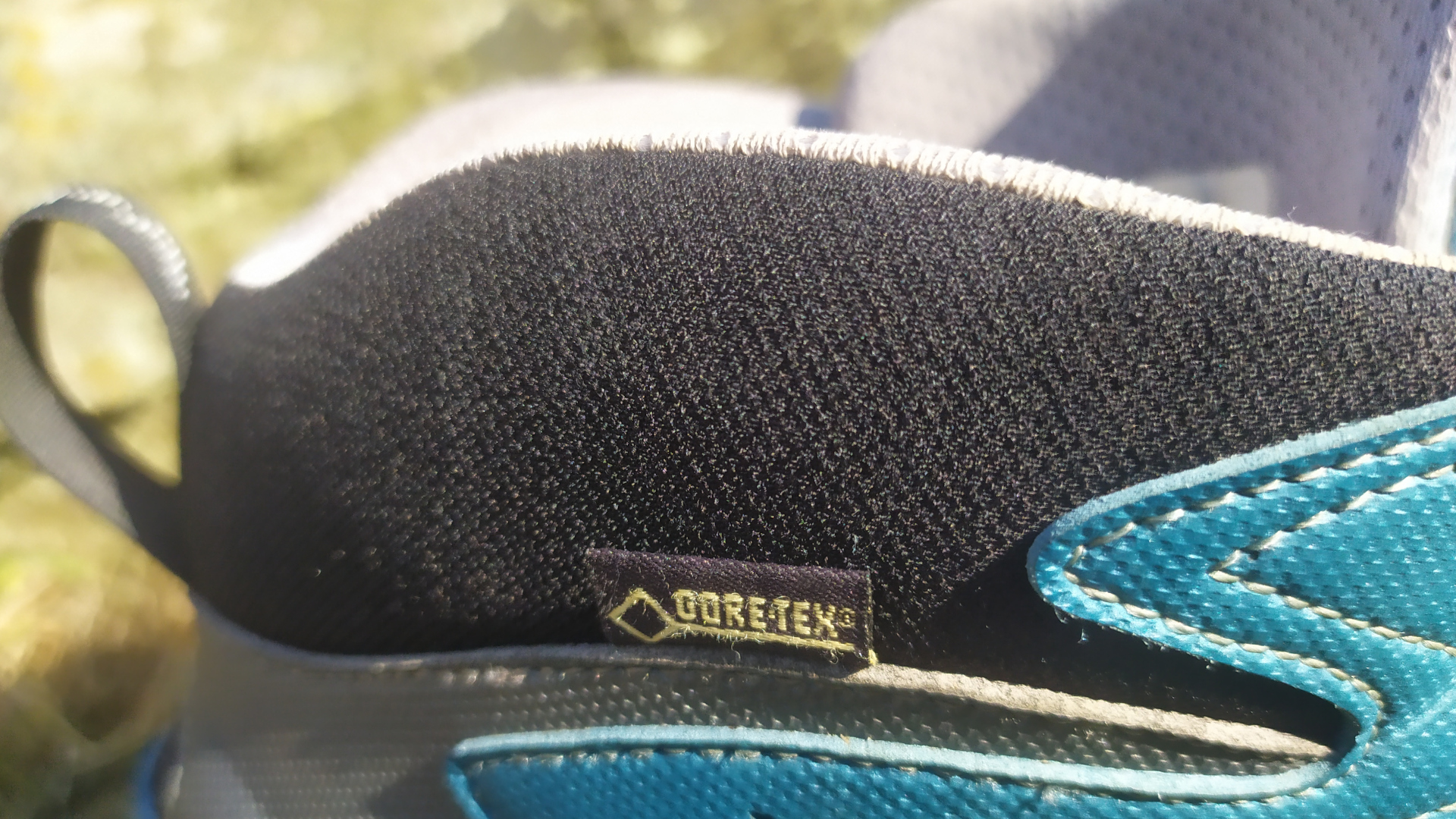
D-rings: these are the D-shaped loops, usually metallic, that are often used in the upper part of the lacing system in place of hooks or eyelets. The main benefit to D-rings is that they grip down on the laces once tied. This makes them more secure and reduces the risk of laces coming untied while you’re on the move.
Inlets: an umbrella term for the parts of a hiking boot used for lacing – D-rings, hooks, and eyelets.
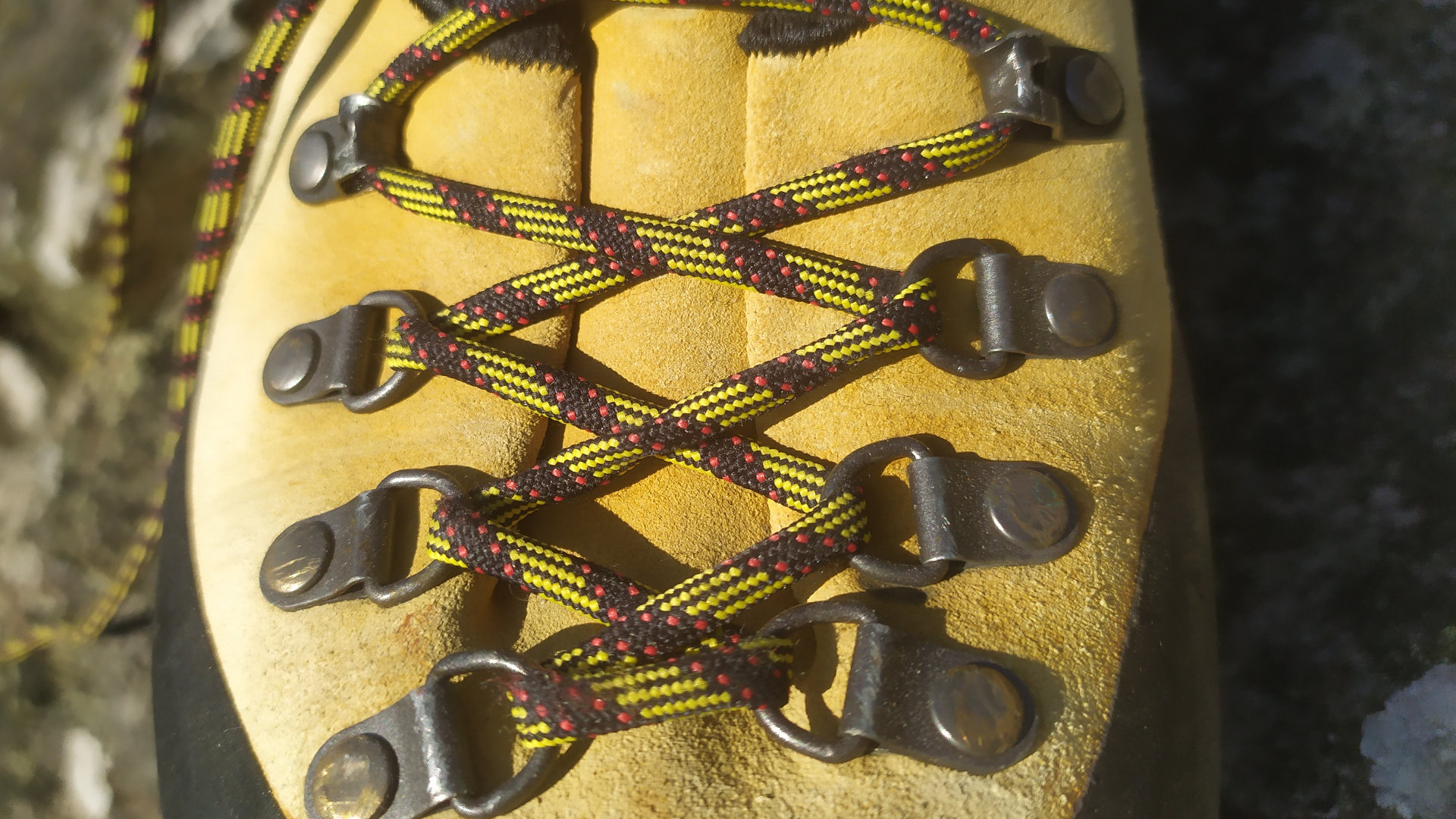
Eyelets: the rows of ring-shaped holes through which the laces are threaded in some boots.
Fastening system: this refers to the boots’ lacing system, whether a traditional lacing system or a quick-release lacing system. Knowing how to tie hiking boots will mean you can configure this to your individual requirements.
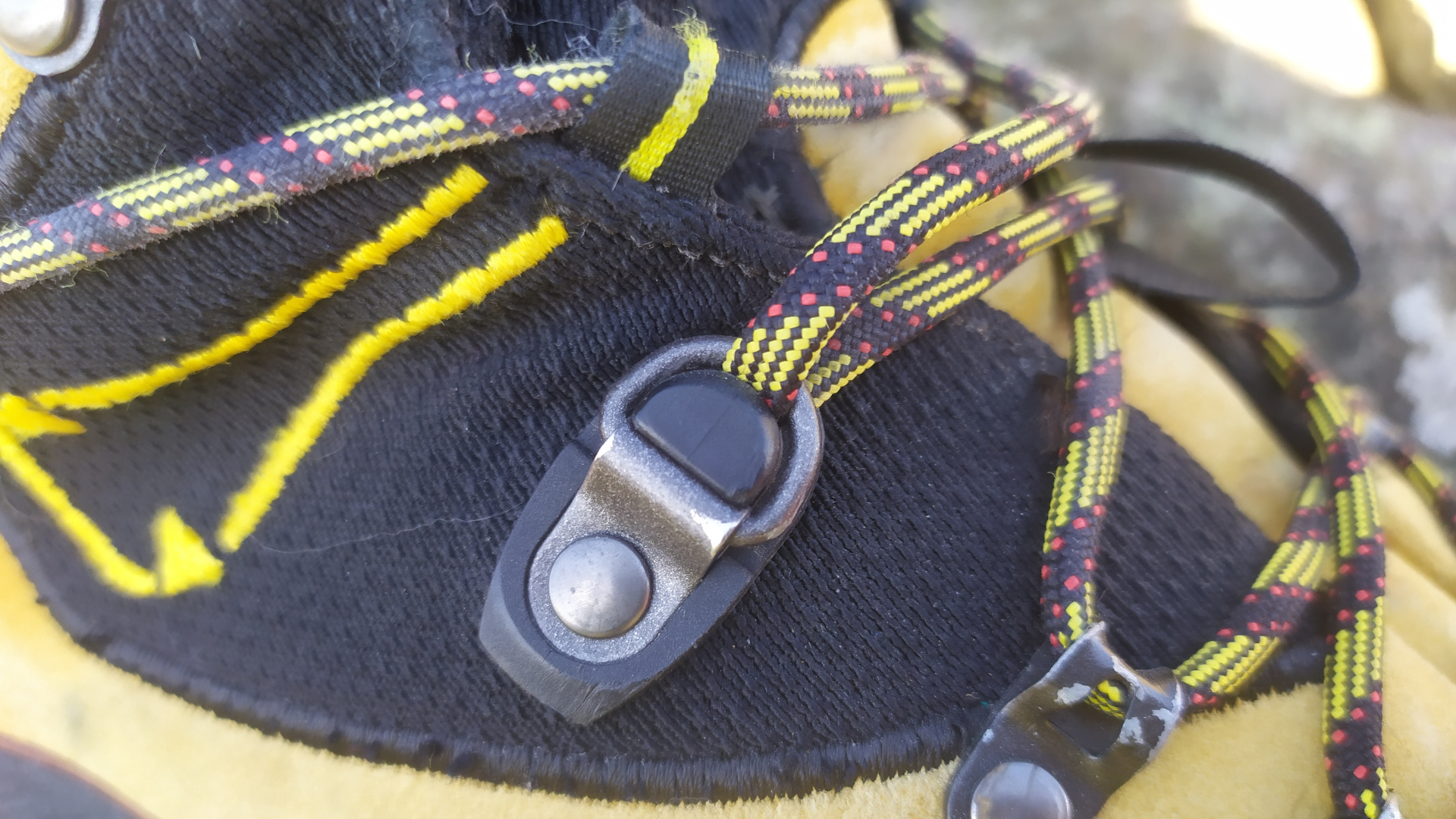
Traditional lacing systems use two or three rows of D-rings or eyelets at the bottom in combination with hooks or further D-rings at the top. Whichever configuration a boot uses, the handiest feature to have is a locking D-ring or hook offset at the ankle that will hold the laces in place even when they are undone.
Quick-release lacing refers to no-tie 'lock lacing' systems that are designed to save you the hassle of tying your laces (!) and provide a more secure closure. These lacing systems allow for one-handed, one-tug tightening and slackening, but often lack the ruggedness of traditional systems. If these laces snap, moreover, they’re far trickier to replace. Another lacing system that has risen to prominence in recent years is the BOA system, where stainless steel wires that are tightened using a dial replace traditional laces.
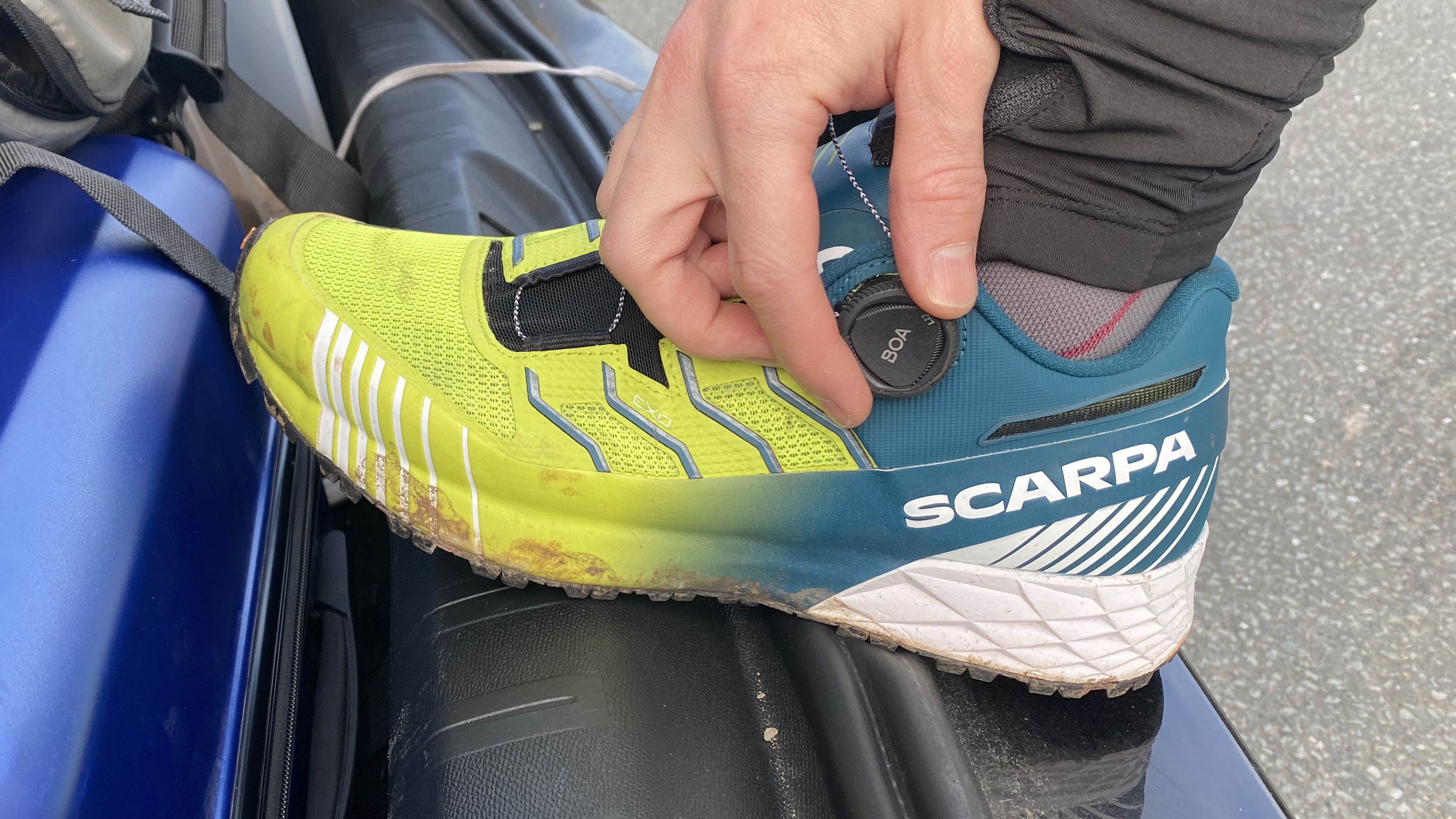
Seams: the parts of a hiking boot where pieces of fabric are sewn together. Because seams are a common point of leakage and abrasion, the most durable and waterproof hiking boots are usually made with one-piece leather, using seams only in the heel and forefoot.
Insulation: the extra material used in winter hiking boots to add warmth and boost heat retention.
Lining: the material inside the shoe that comes in contact with your foot.
Waterproof membrane: a thin lining that is bonded to the interior of the upper. It keeps your feet dry by using microscopic holes that are too small to let water seep in from the outside but big enough to let your sweat escape as a vapour. In many premium hiking boots, Gore-Tex provide the waterproof membrane.
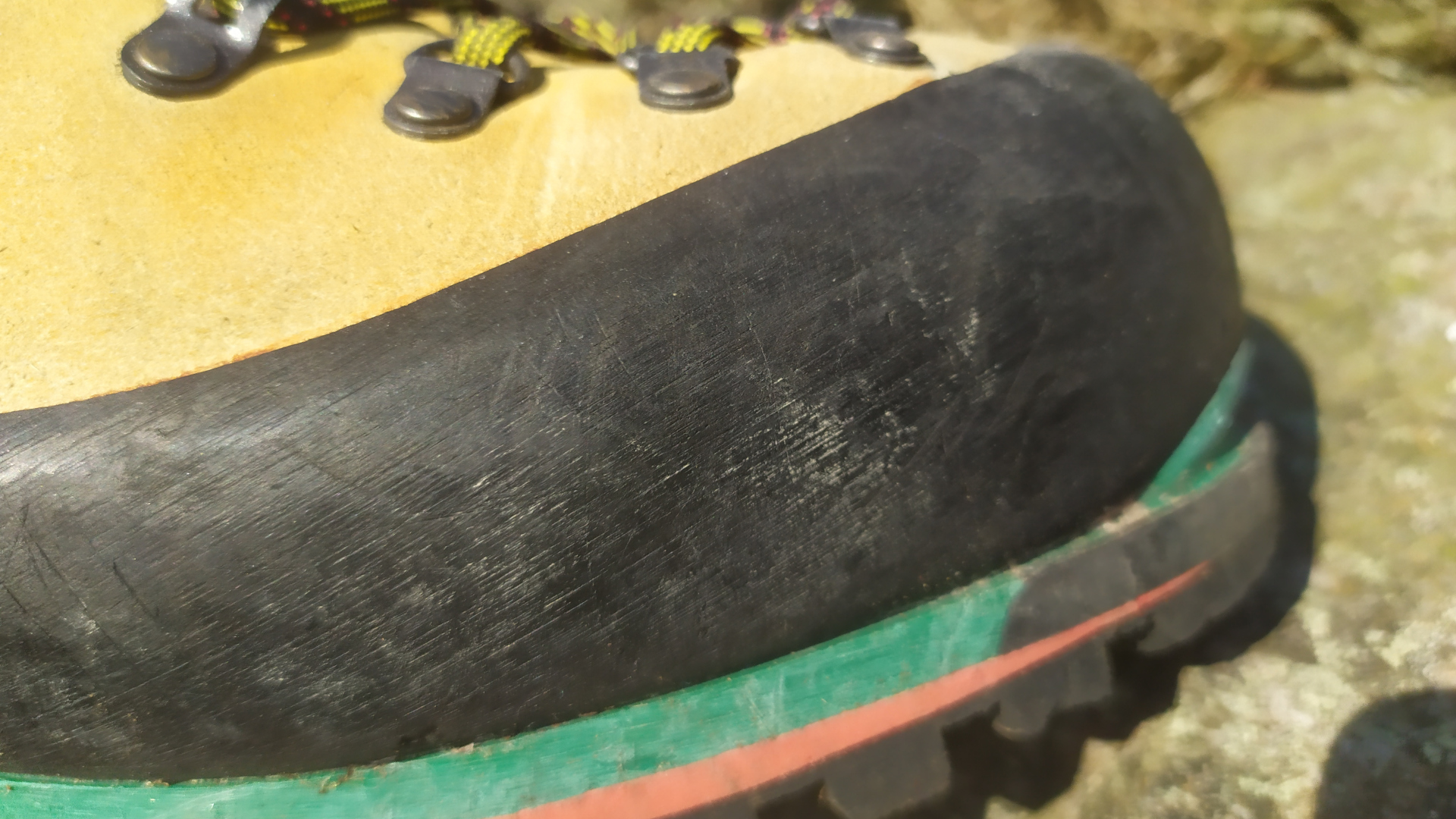
Rand: a strip of rubber that covers the joint between the upper and the sole, either encircling the entire boot or covering the toe area only. Rands protect the material of the upper from abrasions and your toes and the lower part of your foot from bangs and bruises from rocks or debris.
Toe box: the section of the boot that surrounds the toes. Ideally, your toes should not be pressed against the toe box as this can cause bruising or blisters.
Tongue: the flap beneath the laces that covers the forefoot. The tongue prevents dirt, water, and debris from getting into the boot.
Materials used in the upper
Full-grain leather: the most rugged and durable upper material. It's highly waterproof but can be heavy, takes a long time to break in, isn’t as breathable as synthetic materials, and can take an age to dry when wet.
Split-grain leather/suede: a soft and flexible upper material often used in combination with synthetic fabrics to reduce weight and enhance breathability. Usually less waterproof, durable, and abrasion-resistant than full-grain leather.
Nubuck leather: a full-grain leather that has been sanded or buffed. Looks like suede and has the same soft, supple feel. Boots that use nubuck uppers are usually easier to break in than those with full-grain leather uppers.
Synthetic: materials like nylon, polyester, poly-nylon blends, and synthetic leather that are often used in combination with leather, suede, or nubuck in boot uppers. Synthetic-natural combo uppers are usually lighter and more breathable than other varieties but lack durability and abrasion resistance.
Vegan: boots that are made using no animal products or by-products.
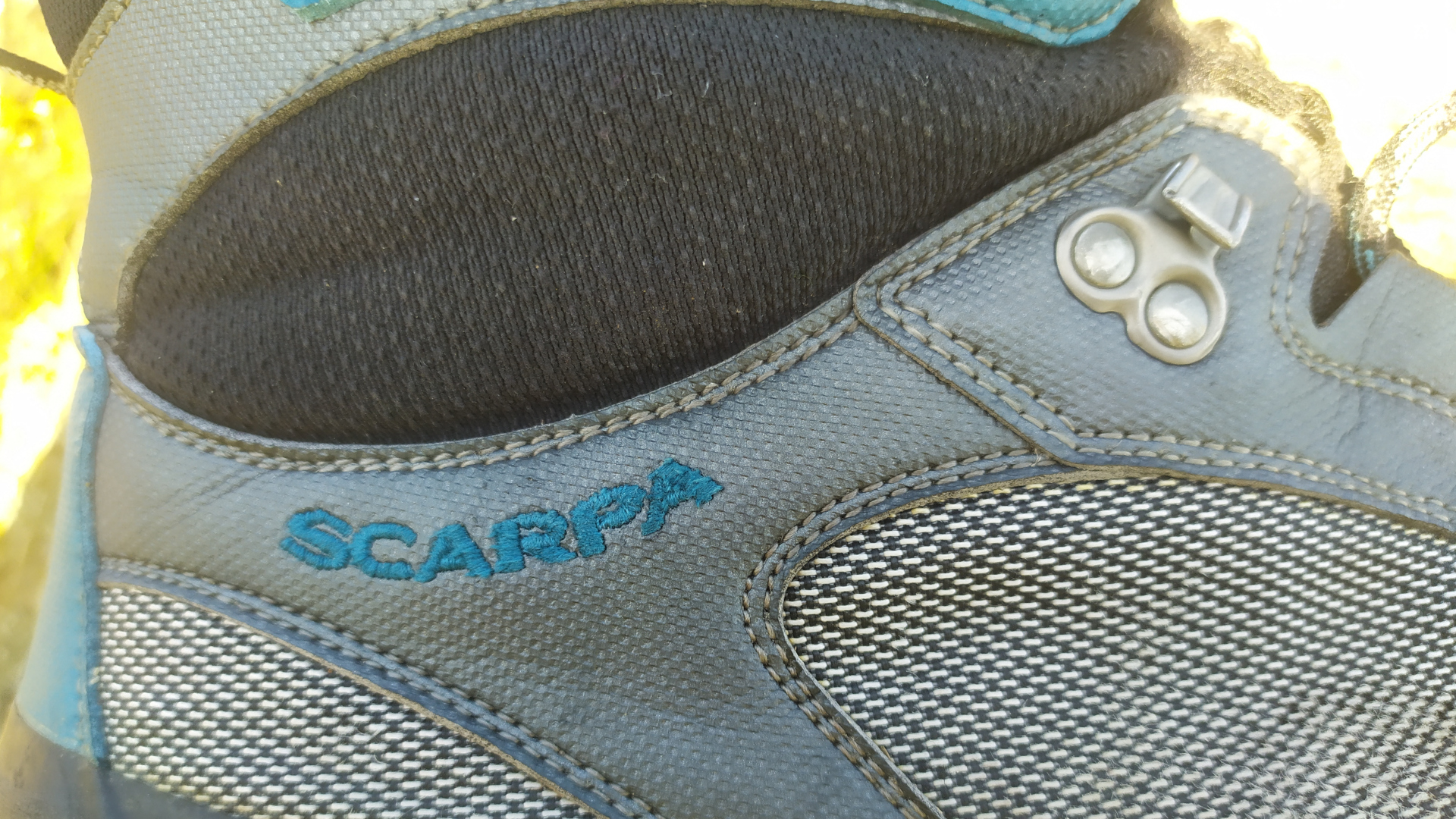
The insole
The insole is the part of the boot that your foot rests on. It's invariably padded and is usually removable, meaning you can replace it with one that's more suited to your individual requirements.
The midsole
The midsole is located between the outsole and insole. These parts of a hiking boot provide cushioning and absorb impact from the trail.
Shank: thin inserts placed between a hiking boot’s midsole and outsole to add rigidity and support, both of which are useful attributes when you’re hiking in steep terrain or are carrying a heavy backpack.
Plates: these are thin inserts squeezed between the midsole and the outsole to provide additional underfoot protection against rocks, roots, and debris.
EVA (ethylene-vinyl acetate): the material used to make many hiking boots' midsoles. EVA is normally soft, cushy, and cheaper than the alternatives but also less durable. EVA is used in varying densities, so the degree of firmness can differ significantly.
Polyurethane: a stiffer and more durable midsole material (compared to EVA) that is often used in mountaineering or backpacking boots. Stiffer midsoles provide more support and leverage on steep ground but can cause foot cramps in more mellow, flatter terrain.
Parts of the outsole
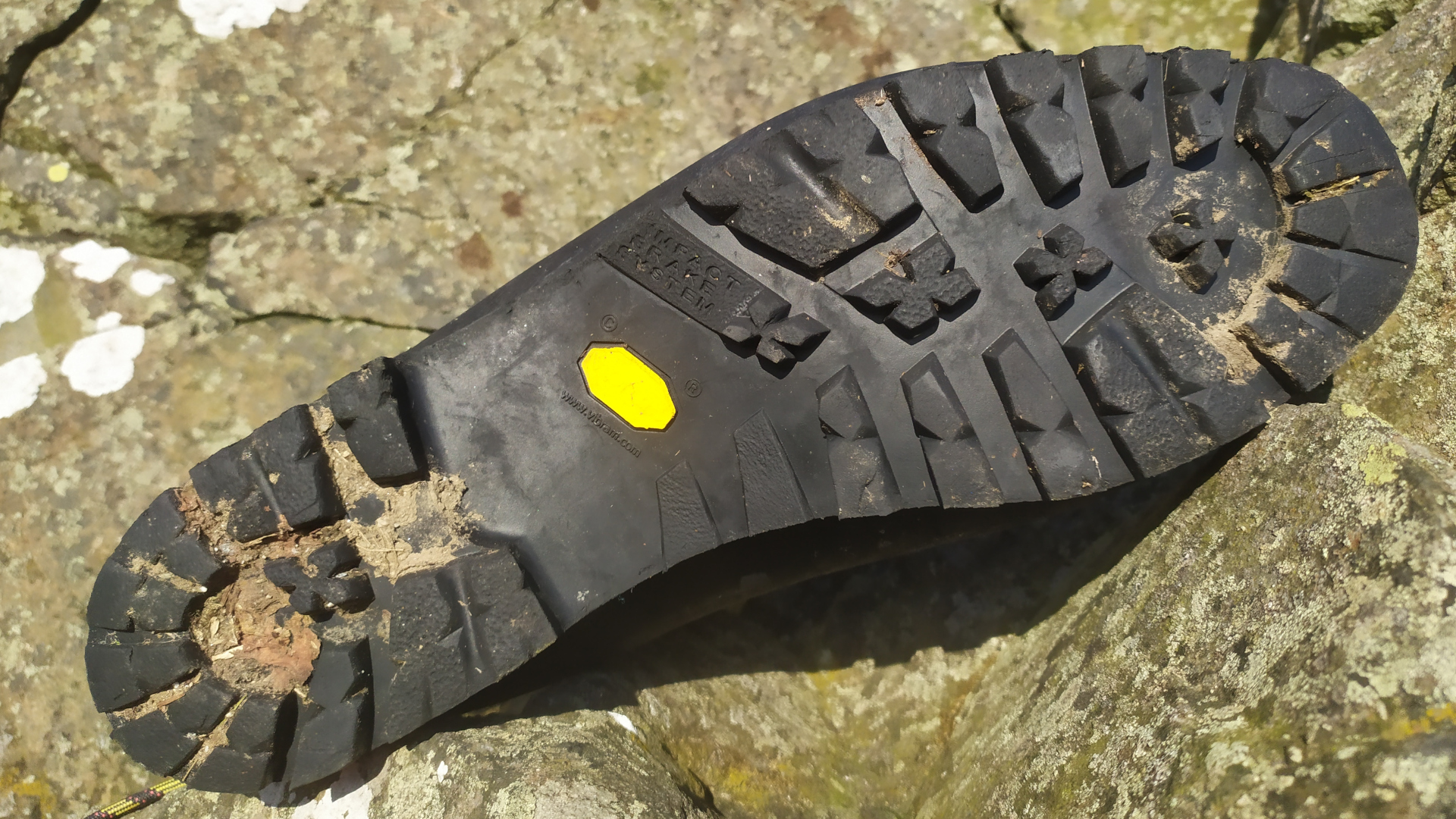
The Outsole is the part of a hiking boot that's in contact with the ground. Vibram outsoles are by far the most common, but others you might come across are Salomon’s Contagrip and Scarpa’s Skywalk. Within each type of outsole there are variants designed for use in specific terrain – i.e., harder rubbers that are more durable, those with well-spaced lug patterns that provide better grip in mud, or softer rubbers that adhere better to rock.
Approach shoes tend to have softer outsoles than hiking boots to provide better grip on rock. The downside to this is decreased durability.
Lug pattern: this refers to the pattern of the tread on the boots’ outsole. Different patterns provide varying degrees of traction but, as a general rule, multi-directional patterns are the grippiest and well-spaced lugs provide the best traction in muddy terrain.
Heel brake: the aggressive lug pattern used in the heel section of some outsoles to provide additional grip and traction.
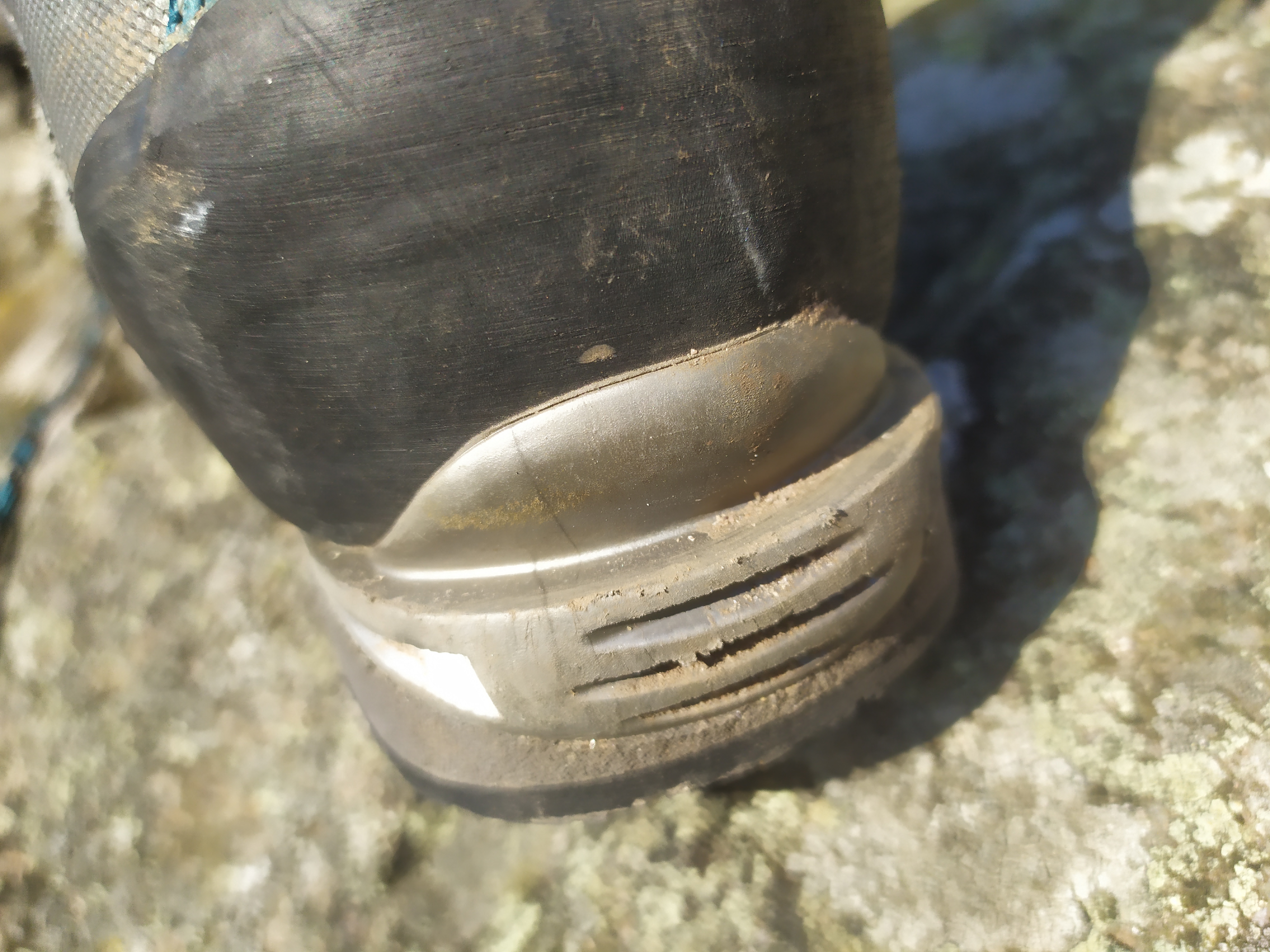
Crampon welts: indents in the heel and toe that are used to attach crampons.
Not all hiking boots are crampon compatible. Those designed for winter or alpine mountaineering boots will be and a simple alphanumeric system is used to grade boots’ compatibility with different types of crampons:
B1 boots are compatible with C1 crampons, which are strap-on crampons used for general hiking in non-technical terrain. These boots normally have a flexible sole.
B2 boots, which are compatible with C2 crampons, are more rigid and have toe and heel welts that attach to the bails on the crampons. These boots are typically 3-season or 4-season models intended for general mountaineering and alpinism. Some B2 boots will use a heel welt only, meaning they are only compatible with semi-automatic crampons, i.e. those that have a locking bail in the heel but use straps to secure the front of the boot instead of a bail bar.
B3 boots are compatible with C3 crampons, which are the variant used for technical mountaineering and ice climbing. These boots are the most rigid available and are unsuitable for use in anything other than steep, technical terrain.







